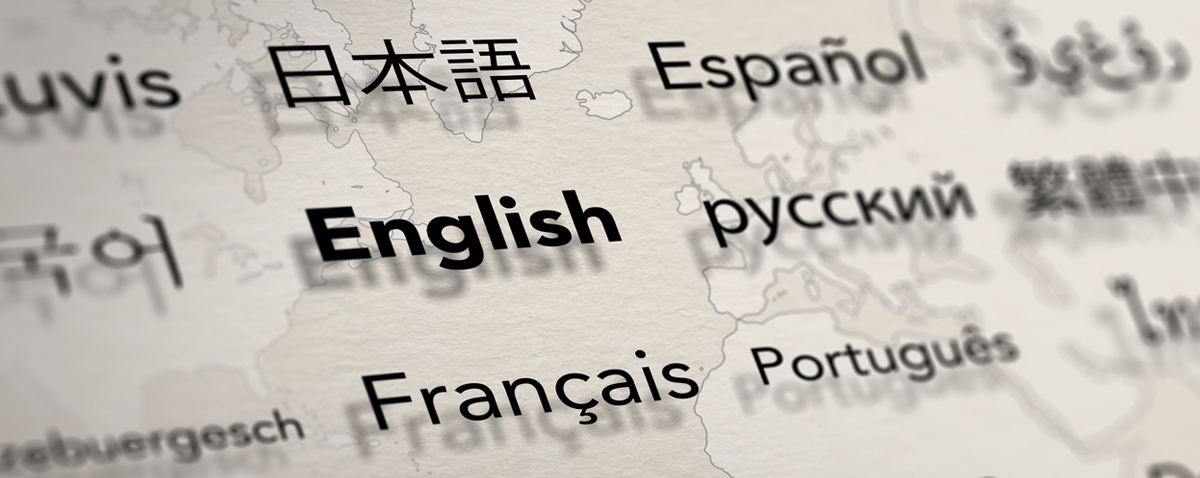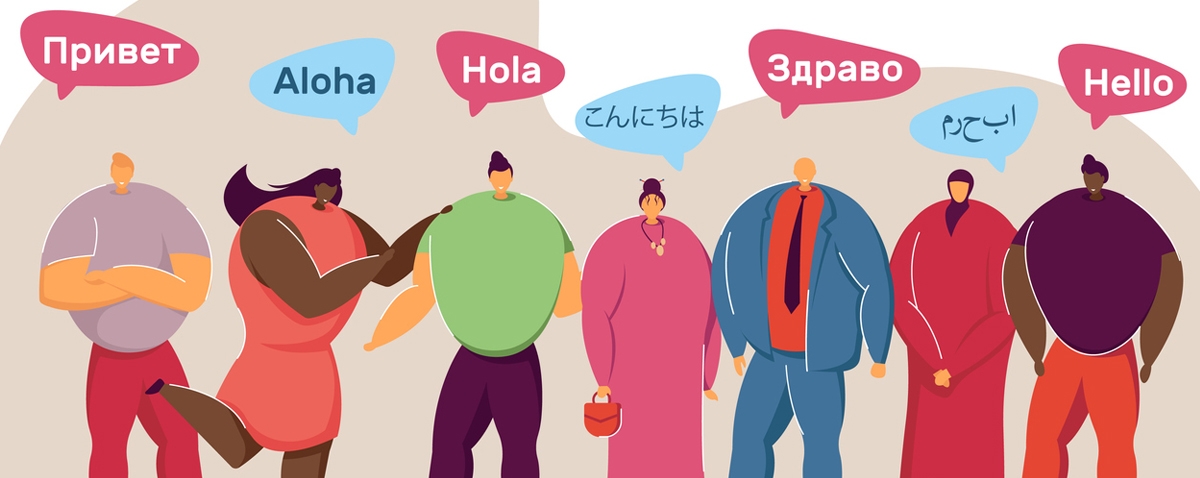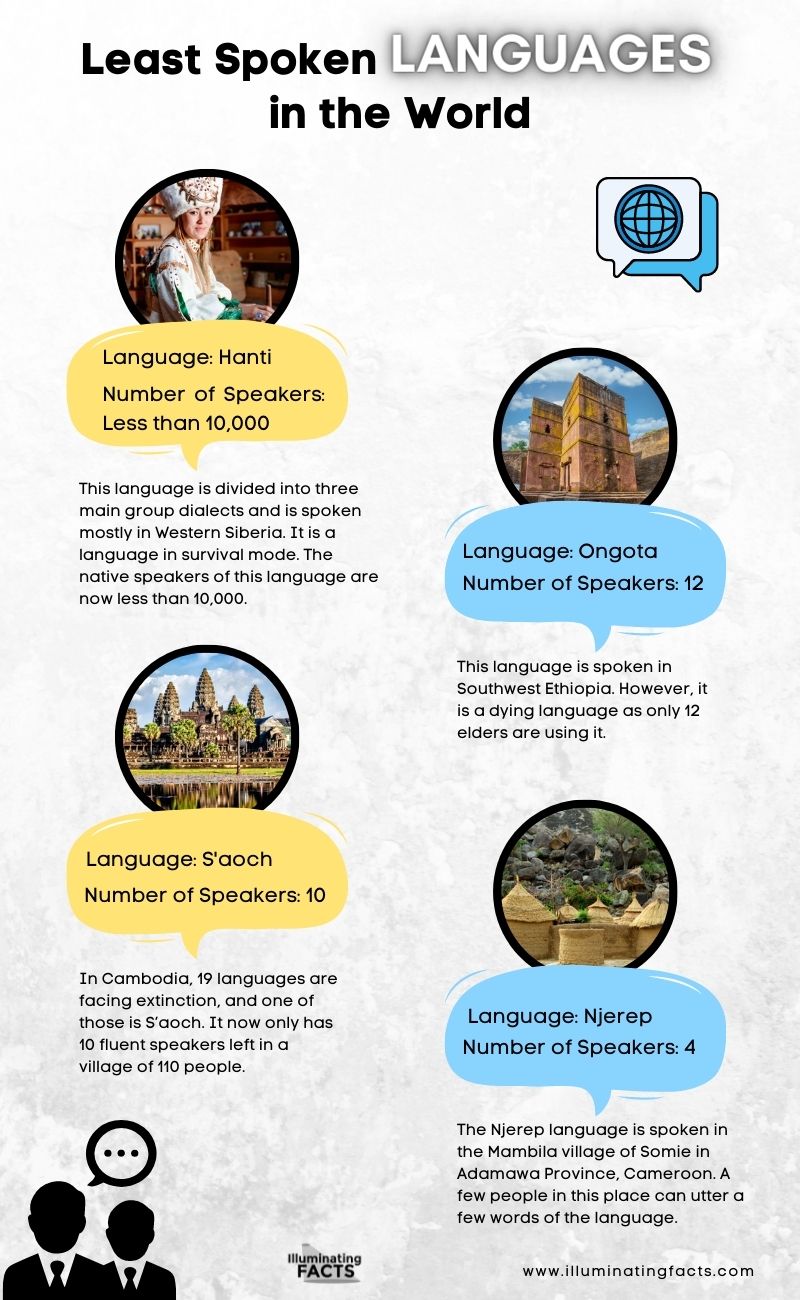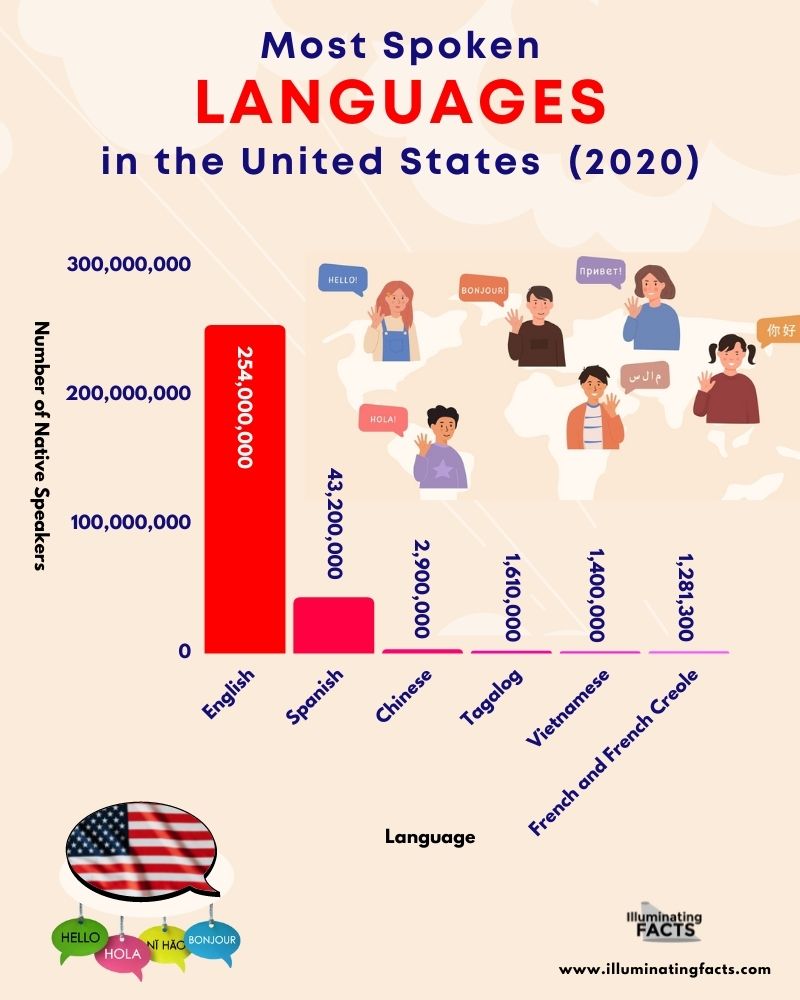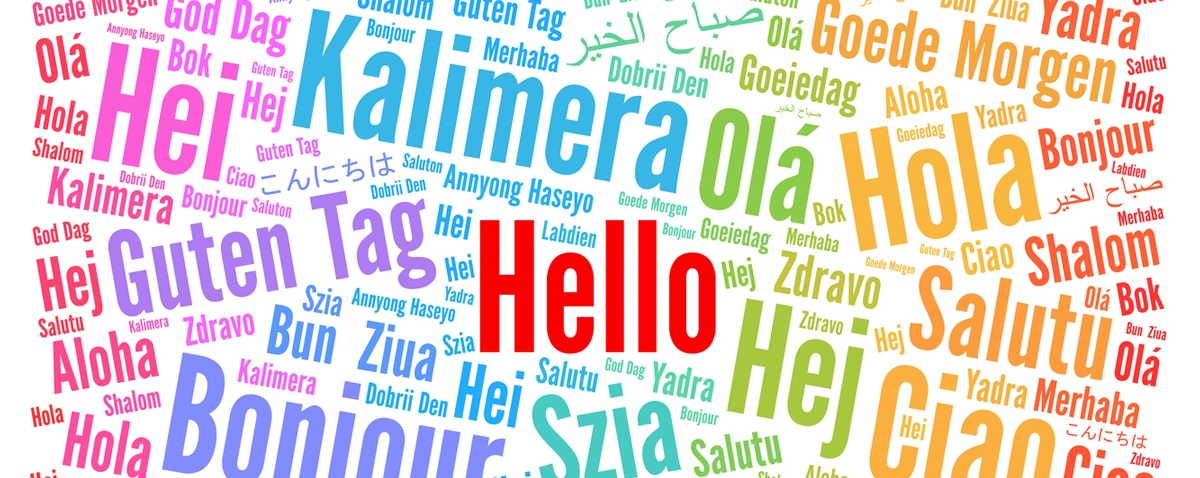Background
According to linguist John McWhorter, an associate professor of English and comparative literature at Columbia University, language or human language pertains to the grammar and other rules and standards that enable humans to make words and sounds in a manner that other people can understand. Based on the work of Guy Deutscher, “The Unfolding of Language: An Evolutionary Tour of Mankind’s Greatest Invention,” it is what makes us human. But to discover what language truly is, looking at its origins, evolutions, and the main role in human existence is essential.
People from different parts of the world speak various languages. Many people are studying other languages to learn other nations’ dialects and further their knowledge and understanding of different cultures. Language is something that connects people, but it can also be a barrier due to the differences from one country to another. There is indeed so much to learn when it comes to languages. If you are interested in acquiring more knowledge about it, you’re in the right place.
In this article, we are giving you lots of information about languages. These include its interesting origin, the different types of languages, the most spoken and least spoken languages in the world, the most spoken languages in the United States, and the most studied languages worldwide. In addition to those, also included are some of the most interesting facts about languages that might blow your mind. Below are all the things you need to learn about languages.
The Mysterious Origin of Language
For centuries, scholars and scientists have been arguing about the origins of language and all the questions connected to it. In fact, in 1886, the Linguistic Society of Paris, an organization devoted to studying languages, banned any debate about the issue. But why do you think it is a topic of debate? Maybe because it is such a unique and complex skill. It is something that only people can do.
Through the years, there have been many attempts to teach apes to speak, particularly chimpanzees, the closest living relative of humans. But no other animal has the vocal pathology needed to speak the way we humans do. With this, it seems the three things a creature needs to speak as we do are a human’s brain, vocal cords, and intelligence.[1]
Continuity and Discontinuity Theories
Before the Linguistic Society of Paris banned the discussion of languages, the theories of how human language evolved were quite humorous, to say the least. But modern theorists sit on one of two sides, Continuity or Discontinuity.
Continuity theories of language evolution believe that it must have developed progressively, starting among the earliest ancestors of humans, with various features developing at different stages until people’s speech resembled what we have at present.
Discontinuity theories of language, on the other hand, suggest that since there is nothing even remotely similar to compare human language with, it is likely to have appeared within human history suddenly. This may have resulted from a genetic mutation in one person, passed on through their ancestors, and became a dominant ability.[1]
The Evolution of “tik”
If there is a word that sounds the same in distinct languages, will it show that these came from the same origin? For example, can “tik” be the source of words that look different today? There is a subclass of linguists who study a group of Native American languages that are working on the issue. They have recreated many words to their protoform. They are referred to as Algonquianists, attempting to find the origin of language.
Algonquianists reconstructed the words “finger” and “one” and concluded that both of these came from the root word “tik.” The supporting idea is that people count one with a finger. The other idea is that some languages still use similar words. For instance, in Dinka, which is a Sudanese language, the word for one is “tok.” In Turkish, the word for “only” is similar to “one,” which is “tek.”
In Old English, “tahe” was the word used for “toe,” which is similar to a finger. In an Eskimo language, “tik” is the word for “index finger.” There are numerous examples of this, and they all pose one question: if they all come from the same origin.[2]
What Are We Really Looking For?
The main difficulty with studying the evolution of language is that the evidence is so scarce. It’s because spoken languages do not leave fossils behind. Fossil skulls can only tell us hominid brains’ overall shape and size, but not what the brains could do. The only definitive evidence is the shape of the vocal tract, which includes the mouth, tongue, and throat. Until about a hundred thousand years ago, the shape of hominid tracts did not allow the modern range of speech sounds until anatomically modern humans. But that does not mean language started then.
Earlier hominids could have had some kind of language that used a more restricted range of vowels and consonants. The development in the vocal tract may only have made speaking more expressive and faster. For some researchers, language started as sign language, then it switched to the vocal modality, leaving modern gesture as a residue.
Did the Changes Happen in Stages or All at Once?
Let us go back to the continuity and discontinuity theories. Some researchers believe that language came in a single leap, the complete system created through one mutation in the brain by which humans express complex meanings through combinations of sounds. They also tend to claim that few aspects of language are not already present in animals.
Other researchers, on the other hand, suspect that the special properties of language evolved in stages, possibly over some millions of years, through a series of hominid lines. In the first stage, sounds would have been used to name different objects and actions in the environment, and people would be able to invent new vocabulary items to speak about new things. To achieve a large vocabulary, one of the important advances would have been the skill to digitize signals into patterns of discrete speech sounds, such as vowels and consonants, instead of unstructured calls. However, this would need changes regarding how the brain controls the vocal tract and possibly how the brain interprets auditory signals.[3]
The next believable step would be the skill to string together several “words” to create a message out of its parts’ meanings. However, this is still not as intricate as a modern language. It could have been a basic “me Tarzan, you Jane” character, which is still better than single-word sounds. Actually, this can be found in two-year-old children and as well as in adults who are starting to learn a foreign language. With this, researchers proposed that the system of “protolanguage” is still present in modern human brains. They are just hidden under the modern system except when the latter is impaired or not yet developed.
The final changes would add a richer structure to ” protolanguage, ” encircling grammatical devices like tense markers, plural markers, and clauses. But some hypothesize that this could have been a purely cultural development. Some also think that it requires genetic changes in the brains of speakers. But the jury is still out.
It is quite difficult to tell when all of this happened. But we know something important happened in the human line between 100,000 and 50,000 years ago. These times were when humans began to find cultural artifacts like art and ritual objects, which are evidence of what we would call civilization. Do you think that during those times, humans get smarter? Did they develop a language all of a sudden? If this was when they developed language, did they change from no language to modern language?[3]
Up until today, there is still no answer to these questions. Unfortunately, there might be no answer about where and how human language evolved. But it will remain a problem that we, humans, will never get tired of trying to resolve.[1]
The Different Types of Languages
Linguists categorize different types of languages in many ways. Some definitions refer to word usage and rules or merely to vocabulary. Others, on the other hand, refer to how language adapts culturally in broader strokes. But some terms can cover variations in grammar, vocabulary, and pronunciation.[4] Here are the different types of languages that you need to learn about:
Standard / Polite / Formal
The standard, polite, and formal languages pertain to those that stick to the rules. They are essentially presented as the “proper” form of English. In practice, it is not necessarily practical English but the kind of English we expect to see in formal writing or polite situations. It is what is generally taught where possible. But alternative forms can also be taught in communities with developed variations.[4]
Argot
This type of language is mainly developed to disguise conversation, initially due to a criminal enterprise. However, the term is also used roughly to refer to informal jargon.[5]
Colloquial Language
This type of language is anything not used in formal writing or conversation. It includes terms that might fall under one or more of the other types of languages. They may be perceived to be judgmental terms, but they merely refer to informal terminologies.[5] The aim of colloquial or informal language is to communicate rather than stick rigidly to rules. It is also where contradictions and idiomatic languages are being used.[4]
Regional Dialect
These are varieties of language that appear based on regionally specific use. There can be many examples of this within one nation alone. It also includes the broad differences between the English spoken in the North and South to the more specific, local dialects, like those spoken in certain cities and other countries.[4]
Lingua Franca
This is a common language used by people who speak different languages. Its full purpose is to create communication gaps. It can be very adaptable and will not necessarily stick to traditional language rules. All over the world, English is used as a lingua franca. Sometimes, it may even be taught in a specific form to fit these needs instead of standard English.[4] It is commonly adopted as a common tongue to allow communication between speakers of different languages.[5]
Pidgin
This language is a simplified version of lingua franca from the efforts of people speaking various languages to communicate. These generally develop to facilitate trade between people without a common language.[5] Though it is technically a lingua franca, it often merges two or more languages instead of something true to one common language. This means it can develop its vocabulary and rules that can be very independent of the original source languages.[4]
Creole
This is a more sophisticated development of pidgin. It is derived from two or more parent languages and used by people of all ages as a native language.[4] It is derived from two or more parent languages. Creole is used by people of all ages as a native language.[5]
Jargon
This is a body of words and phrases that apply to a certain activity or profession. It is usually necessary for precision when pertaining to procedures and materials integral to a specific pursuit. But in some fields, jargon is employed to an excessive and gratuitous degree, usually to conceal the truth or deceive or exclude outsiders.[5] Sometimes, jargon is also viewed as negative, as it can be used to separate others from a conversation or to make a superior appearance.[4]
Vernacular
This is the term used in describing language as it is used naturally by specific people. What vernacular describes depends on what we wish to specify. For example, we can talk about the vernacular of a nation or a smaller community within a city or of a certain time and place.[4]
Slang
Slang is a vocabulary of terms employed in a specific subculture. These words are either invented, or those whose meanings are adapted to new senses develop out of a subculture’s desire to disguise or exclude others from their conversations. Slang becomes more widespread in usage as U.S. society becomes more youth-oriented. Subcultures continuously invent new slang as older terms are appropriated by the mainstream population.[4]
Most Spoken Languages in the World
At present, there are roughly 7,000 languages spoken in the world. Each of those languages makes the world diverse. However, some of these languages are less widely spoken compared to others. On the other hand, other languages are used by many people across different countries. If you are curious about these languages, below are the most spoken languages in the world.
In 2021, around 1.35 billion people worldwide spoke English natively or as a second language. It is a bit more than the 1.12 billion Mandarin Chinese speakers. On the other hand, Hindi and Spanish accounted for the third and fourth most widespread languages in 2021. The graph above shows the most spoken languages worldwide and the number of native speakers.[6]
1. English
English is the most spoken language in the world today. It is also the official language of the sky, as all pilots have to speak and identify themselves in English. Did you know that over Shakespeare’s lifespan, he added around 1,700 words to the English language by transforming nouns into verbs, verbs into nouns, adding prefixes and suffixes, and connecting words with each other? English is the lingua franca of travel, business, and international relations. In fact, for some people, English is synonymous with opportunity and a better quality of life.[7]
2. Chinese
Chinese is also among the most spoken languages in the world. According to research, you only need around 2,500 characters to be able to read almost 98% of everyday written Chinese. It is the second most spoken language worldwide. It is the official language of mainland China, Singapore, and Taiwan. It is also among the six official languages of the United Nations. You also have to note that this language is tonal. This means that the meaning of a word can change based on how it is pronounced. It is among the most complex languages to learn.[7]
3. Hindi
English speakers probably know some Hindi words. Some examples of this are “karma,” “yoga,” “bungalow,” “guru,” and more. It is the world’s third most spoken language and India’s official language. It is also widely used in Nepal, Fiji, Guyana, and Mauritius. The language is highly influenced by Sanskrit.[7]
4. Spanish
Did you know that the first modern novel and second most translated book after the Bible was written in Spanish? Yes, and that is “Don Quixote” by Miguel de Cervantes. In the four continents, 22 countries have Spanish as the or among the official language. It is also the second most studied language worldwide.[7]
5. Arabic
Did you know that Arabic has about 11 words for love? Each of those words expresses a different stage in the process of falling in love. That’s amazing, right? It is the fifth most spoken language worldwide. This language also has heavily influenced European languages, such as Portuguese and Spanish.[7]
6. Bengali
Bengali is also known as Bangla. It is commonly spoken in Bangladesh and India. This language is considered by some people as the second most beautiful language next to French. The Bengali alphabet is also quite interesting. Each consonant has a vowel sound built-in, which is quite different for Westerners. Also, the different marks for each word change the default vowel sound of a word, including the meaning.[7]
7. French
Did you know that about 45% of modern English words are of French origin? This language is spoken in different parts of the world, including Canada, Senegal, and Madagascar. It has truly spread its roots far and wide.[7]
8. Russian
Astronauts are required to know a certain amount of Russian because of Russia’s presence in space technology. It is among the most spread-out languages and the 8th most spoken language in the world. Russian grammar can be a bit tricky. But it only has around 200,000 words, while English has roughly a million. This is why most of their words have more than one meaning.[7]
9. Portuguese
It was just recently when the letters “k,” “w,” and “y” were added to the Portuguese alphabet. A new agreement was signed in 2009 to standardize the spelling forms across variations. The language is rooted in the region of Medieval Galicia. However, only 5% of the 258 million native Portuguese speakers actually live in Portugal.[7]
10. Urdu
Urdu is the lingua franca of Pakistan and is very close to Hindi. It is dubbed by some as the language of love due to its intriguing sound and beautiful words. Hindi and Urdu speakers can have simple conversations as long as they keep things relatively simple.[7]
Least Spoken Languages in the World
Tribes in remote areas around the world speak rare languages. The issue is the dwindling number of speakers. They still speak the language that they have learned since they were born. However, many of their children have no interest in learning or speaking their language and prefer to speak the dominant language in their country or locality. When this happens, languages die or become extinct unless some people would put effort into reviving the language.[8]
Below are some of the least spoken languages in the world:
Currently, there are more than 2,000 endangered languages in the world that are on the brink of extinction. The rate at which these languages and dialects are dying is quite alarming. Based on National Geographic, a language vanishes from the face of the earth every 14 days, and only a few leave any recognizable traces. These are the languages only used by a few elders of small communities. Most of these also lack a writing system, which makes their preservation even more challenging.[9]
The graph above shows the four languages in the world that are under threat of completely disappearing within a few years. These are the least spoken languages in the world.
- Hanti: This language is divided into three main group dialects and is spoken mostly in Western Siberia. It is a language in survival mode. The native speakers of this language are now less than 10,000. It is an evidentiality system, requiring the speaker to say grammatically whether they have seen something or acquired the knowledge through hearsay. It is a great feature that gives the speakers of Hanti a unique perception of facts and reality. It is something quite relevant in the current era of “fake news.”[9]
- Ongota: This language is spoken in Southwest Ethiopia. However, it is a dying language as only 12 elders are using it. There’s a high chance that this language will soon be replaced by its closest competitor, the Tsamai language. When the Ongota men married into the Ts’amakko tribe, the mothers would teach the next generation their language, which is Tsamai. This made it clearly dominant over Ongota.[9]
- S’aoch: In Cambodia, 19 languages face extinction, and one of those is S’aoch. It now only has 10 fluent speakers left in a village of 110 people. Their culture was once stable but was destroyed by the Khmer Rouge in the 1970s. They were snatched from their land and locked up in labor camps by the communist regime. They were forbidden to speak their own language and killed their culture and religion in the process. Today, they do not desire language maintenance as their own tongue has no prestige.[9]
- Njerep: The Njerep language is spoken in the Mambila village of Somie in Adamawa Province, Cameroon. A few people in this place can utter a few words of the language. However, they are no longer “semi-speakers” but just “rememberers” of the language. In its dying stages, it has been used mostly for songs, jokes, greetings, and sharing of secrets. In 2000, documentation was made public, which showed only 4 people in the late 1990s used Njerep at home, and only one elderly in the group could converse with it.[9]
Most Spoken Languages in the United States
The United States is usually called the melting pot of cultures and nationalities. It is defined by its rich diversity, represented by the different languages in the United States used at home. In 2015, the U.S. Census Bureau found at least 350 languages spoken at home in the United States.[10] But among these languages, which do you think are spoken the most by U.S. residents? If you are curious about this, below are the most spoken languages in the United States.
1. English
It is not a surprise that English is the most spoken language in the United States. But did you know it is not an official language in the country? It’s because the United States does not have an official language in the books, but this has also sparked many debates in the past. But even though there is a lack of an official language on a federal level, many of the 50 states have passed laws making English their official language.
English speakers make up a huge part of the United States population. But since there is a wide range of regional dialects, it can sound like there are lots of versions of English being spoken in different parts of the country. This means that vocabulary and pronunciation make each region in the U.S. a separate world. [10]
2. Spanish
The number of Spanish speakers in the United States is significantly less compared to English speakers. But it is the fastest-growing language in the country. From 1980 to 2013, Spanish speakers in the country increased by 233%. The fact is, there are more Spanish speakers in the United States compared to Spain, making it second only to Mexico when it comes to the Spanish-speaking population.
There are Hispanic communities in every state in the U.S., with mainly big concentrations of Spanish speakers in major cities, such as Los Angeles, Miami, and New York. There were also many Spanish speakers in the Southwest, sometimes called El Norte, as Arizona, California, Texas, and New Mexico composed the northernmost region of Mexico until 1848. [10]
3. Chinese
There are also many Chinese speakers in the United States. Many Chinese migrated to the United States in the 19th century, hoping to win big in the state’s Gold Rush. Their heritage can be seen in the big and vibrant Chinese-American communities or “Chinatowns,” which can be found in cities across the country. Most Chinese speakers in the United States live in California, New York, and Texas. [10]
4. Tagalog
Even though Tagalog is widely spoken across the United States, it has less name recognition than the other languages on this list. This is a widely spoken language in the Philippines. Its standardized version, which is Filipino, is one of the Philippines’ official languages.
There are around 43% of Filipinos in America that reside in California. However, a large concentration lives in New York and Hawaii. The Philippines was annexed by the U.S. in 1899. Therefore, Filipinos are considered “American nationals,” which makes immigration a less painful process. Many Filipinos came to the U.S. in the early 20th century to work as agricultural laborers in California and Hawaii. Then, between 1960 and 2013, another large wave of Filipinos migrated for different reasons, such as educational and economic opportunities. [10]
5. Vietnamese
From 2000 to 2014, more than 300,00 Vietnamese arrived in the U.S. to reunite with family members, many of whom sought refuge following the Vietnam War. Many of them settled in California and Texas. [10]
6. French and French Creole
French Creole is an interesting subset of American culture. It is a hybrid of French and African languages. France controlled Louisiana territory in 1699, and French settlers brought over their culture and language. In 1803, after the Louisiana Purchase, the importation of enslaved Africans increased, driving the influence of West African languages on the regional French. [10]
At present, more Americans speak standard French compared to French Creole. The influence of French can be seen in many American English words and phrases. Some of these include “omelet,” “décor,” and “ballet.” [10]
The Most Studied Languages in the World
There is a connection between the popularity of a language and the number of countries where it is spoken. The more widespread a language is, the more potential opportunities it offers to language learners. Some languages offer many advantages to their speakers. Some of them can open up career opportunities or broaden a person’s professional connections in different parts of the world. Some people also choose to learn different languages for travel purposes, while some are needed for educational requirements or just personal goals.[11]
Below are the most studied languages in the world:
1. English
The most studied language in the world is English. It is the only language worldwide that tallies over a billion students. More than a billion people worldwide speak English as a native or additional language. It is also the official language of over 50 countries.
It is not surprising that English is very popular and heavily studied. In many countries, global content like news, entertainment, and politics, is usually reported in English. Since it is among the most widely spoken languages in the world, it facilitates global communication. Many international establishments and companies use English as the language of choice when conducting business. This means that English speakers have a leg up in lots of employment situations. [11]
2. French
Besides English, French is the only language spoken on five continents. More than 260 million people speak French, making it the 7th most spoken language in the world. Many language learners are interested in studying French as it is a smart investment. It is among the fastest-growing languages in the world. In fact, 750 million people are expected to speak French by 2050.
French is also among the languages in demand among businesses in the United Kingdom. It is a great language to learn if you are in the U.K. and want to expand your professional opportunities. [11]
3. Chinese
About 1.1 billion people, or 16% of the global population, speak Chinese as a native or additional language. The number is also high as China is the most populous nation, with more than a billion citizens.
The Chinese language has a reputation for English speakers as challenging to learn. However, that is a misconception as Chinese has no verb tenses and no gender rules that need memorization. The language also carries significant potential in the business world. It’s because China is a global economic powerhouse offering many business opportunities. [11]
4. Spanish
There are 21 nations in the world where Spanish is the official language. There are 543 million Spanish speakers worldwide, and there are more Spanish speakers in the United States than in Spain. These make Spanish an especially famous language for residents of the U.S. who are looking for employment opportunities or simply want to communicate with more of their neighbors.
Spanish is the third most widely used language on the internet, next to English and Chinese. Many English speakers want to learn Spanish as it is considered one of the easiest languages to learn. Only 600 hours of study time is needed to achieve proficiency in Spanish.[11]
5. German
About 95% of Germany’s population speaks German as their first language. Many businesses also involve German companies, such as BMW, Volkswagen, and Adidas. German is also a vocabulary-lover’s dream. It’s because some amazingly long German words are not easily pronounced by beginners but are really fun to learn. [11]
6. Italian
The thriving economy of Italy and its place as a solid market for U.S. exports make Italian a contender among the most learned languages in the world. It is very popular for internationally-minded learners, academics, and culture lovers.
7. Japanese
Many factors motivate people to learn Japanese. Some are for employment opportunities, while some are for educational exchange programs. Many people try to learn the language so that they will be able to understand Japanese anime in its original language. [11]
The Most Used Languages on the Internet
When you browse online, you will see that the world wide web is consumed in thousands of languages. Some are more common compared to others. It is interesting to know that the online use of language does not always reflect how many people speak it. For instance, the third most spoken language in the world is Hindi. However, it is not among the top languages that are used online.[12] If you want to learn about the top languages used on the internet, check the graph below.
On the graph above, the share of the speaking population pertains to the percentage of the global population that identifies as a speaker of a specific language, whether their native language or a second language. Based on the data, English is the most commonly used language online, which is used by 60.4% or about six million of the top 10 million websites. Also, China has the most internet users worldwide, but only 1.4% of the top 10 million websites use Chinese.[12]
It is interesting to see that the second spot is taken by Russia due to the significant online presence of Runet, which is the online Russian language community. It is also the official language of many countries formerly part of the Soviet Union.[12] Though English and Russian languages will continue to dominate the online world, it can also be seen that Asian languages have the highest potential to grow in internet usage in the coming years.
Interesting Facts About Languages
If you want to know more about languages, here are some of the most interesting facts that you need to know:
- There are more than 300 languages that are spoken in the United States, making it one of the most diverse countries in the world.
- The United States does not have an official language.
- A spoken language can become extinct. It dies out if there is no one to speak it or record using written variations. There are already 241 languages that have become extinct.
- Half the population worldwide speaks only 23 languages, which is too few compared to more than 7,000 languages or dialects.
- At least more than half of the world’s population speaks more than one language, or what is called bilingual.
- Papua New Guinea is known to be the country with the greatest number of languages, totaling 841. However, 40 of these are to become extinct.
- The Bible is the most translated document. It has been translated into 683 languages, and parts of it have been translated into over 3,000 languages.
- The oldest written language is Sumerian, which dates back to 3500 BC.
- Today, French is known to be the love language. Not just because of the accent but also because of the fine love destinations in this country.
- Almost all languages in the world have been influenced by another language. This is due to the diversity and immigration of people in various places worldwide.
- South Africa has the most official languages totaling 11. This shows how diverse the country and its culture are.
- English is the most dominant language in the world as it is well received and adopted in many countries.
- The Cambodian language has the longest alphabet, with more than 73 characters. It is also among the hardest languages to learn.
- German was the first language to be printed. However, it was not the first language to be written, but it was printed in a book.
- Out of all the information stored by computers worldwide, 80% is in English.
- Japanese is the fastest spoken language in the world.
- English is the most evolving language in the world, having around 4,000 new words each year.
- Asia has the most languages as it has 2,300 languages spoken.
- Most languages are either feminine or masculine. However, in the German language, there are three genders, which are feminine, masculine, and neuter.
- South Korea and North Korea have different languages. They have been separated for so long that they have different vocabularies and grammatical rules.
Conclusion
There are indeed so many things to learn when it comes to languages. It is amazing that people worldwide speak various languages but still finds ways to understand one another. At present, it is quite easy to do this. In addition to learning different languages in schools and other institutions, there are now lots of devices and applications that people use to understand a different language. The origin of human language is still a mystery, but it has developed well through the years. We hope this article helped you in learning more about languages.
References
[1] Language Insight. (2020, January 21). The origin of language: Evolution’s greatest mystery. Language Insight. Retrieved March 2, 2022, from https://www.languageinsight.com/blog/2019/the-origin-of-language-evolutions-greatest-mystery/
[2] McWhorter, J. (2020, September 4). Origin of language: When did it start and how did it evolve? The Great Courses Daily. Retrieved March 2, 2022, from https://www.thegreatcoursesdaily.com/origin-of-language-when-did-it-start-and-how-did-it-evolve/
[3] Jackendoff, R. (2020). How Did Language Begin? Linguistic society of America. Retrieved March 2, 2022, from https://www.linguisticsociety.org/content/how-did-language-begin
[4] Williams, P. (2020, September 7). Different types of language varieties. English Lessons Brighton. Retrieved March 3, 2022, from https://englishlessonsbrighton.co.uk/different-language-varieties/
[5] Nichol, M. (2013). 12 types of language. Daily Writing Tips. Retrieved March 3, 2022, from https://www.dailywritingtips.com/12-types-of-language/
[6] Szmigiera, M. (2021, March 30). Most spoken languages in the world. Statista. Retrieved March 3, 2022, from https://www.statista.com/statistics/266808/the-most-spoken-languages-worldwide/
[7] Klappenbach, A. (2022, February 23). Most spoken languages in the world 2022. Busuu Blog. Retrieved March 3, 2022, from https://blog.busuu.com/most-spoken-languages-in-the-world/
[8] Day Translations. (2021, October 7). Rare languages: The World’s least spoken language. Day Translations Blog. Retrieved March 3, 2022, from https://www.daytranslations.com/blog/rare-languages-spoken/
[9] Marques, N. (2018, January 9). What are the least spoken languages in the world? Babbel Magazine. Retrieved March 3, 2022, from https://www.babbel.com/en/magazine/least-spoken-languages-on-earth
[10] Lyons, D. (2020, May 18). What are the most spoken languages in the U.S.? Babbel Magazine. Retrieved March 4, 2022, from https://www.babbel.com/en/magazine/most-spoken-languages-in-the-us
[11] Maria, A. (2022, March 2). It’s good to be popular! 7 of the world’s most studied languages. FluentU Language Learning. Retrieved March 4, 2022, from https://www.fluentu.com/blog/most-studied-languages/
[12] Bhutada, G. (2021, July 29). Visualizing the most used languages on the internet. Visual Capitalist. Retrieved March 4, 2022, from https://www.visualcapitalist.com/the-most-used-languages-on-the-internet/
[13] Speakt, E. (2020, March 24). 50+ language facts that will surprise you. Speakt.com. Retrieved March 4, 2022, from https://speakt.com/language-facts/




